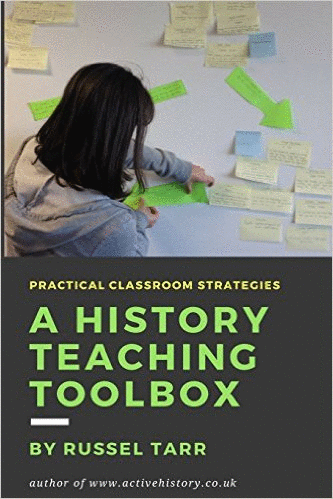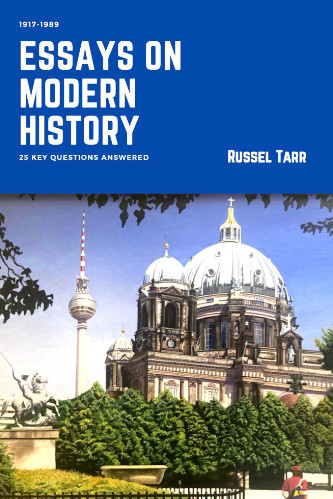Transform your history classroom
ActiveHistory provides educational, award-winning interactive simulations, decision-making games, self-marking quizzes, high-quality worksheets and detailed lesson plans for the school history classroom. All resources have been designed by full-time history teacher Russel Tarr.
An ActiveHistory subscription provides everything you need to construct and deliver a History course from start to finish for the entire 11-18 age range!
These consist not just of lesson plans, worksheets and teacher notes, but also multimedia lectures and interactive games and historical simulations ideal for remote learning and self-study.
World History teaching resources for the high school classroom: lesson plans, worksheets, quizzes and simulation games for KS3, IGCSE, IB and A-Level teachers.
A QR-Code Treasure Hunt is a fun, simple way to get students using their mobile devices to continue learning outside of lesson time. Here's how we set one up at the International School of Toulouse with some guidance on how to do the same with your own students using the QR Treasure Hunt Generator at ClassTools.net.
1. The Background
For several lessons, the students had been slowly piecing together the Mystery of the Franklin Expedition in History lessons. Through pictures, snippets of evidence, and a roleplay exercise, the students formulated their own questions for investigation, framed provisional answers, and then reframed their assumptions as more evidence was progressively provided to them. This 'History Mystery' format is explained in more detail here and is designed to encourage students to help students find problems as well as to solve them.At the end of the research phase, students were required to produce an essay introducing the mystery and answering the five key questions they settled upon as being the most important to solve. The standardised markscheme, which is provided to students in advance, gives specific credit to students who show evidence of wider research - which leads us to the Treasure Hunt...
2. The Treasure Hunt
With students just about to start their essay assignment, a series of 20 codes were hidden in random locations around the school. These were created using the Classtools QR Treasure Hunt Generator.
Students were put into small teams: each of these teams contained at least one person owned a mobile device (e.g. phone, IPod Touch) which could decode the QR codes (note: an internet connection is not required - the QR codes decode as text files).
Each code, when 'read' by the mobile device, turned into a quiz question relating to the study topic. Some of these tested (and so consolidated) existing knowledge; some of them required further research to obtain the answer.
In breaktimes over a two-day period, the teams of students hunted around for the codes, copied down the numbered questions as each one was decoded, and then researched and recorded the answers. The completed answer sheets were then handed in at the end of the school week and the team with the most correct questions and answers was awarded a prize.
The following week, the sheets were photocopied and returned to the members of the teams. Each student could then use the fresh information they had gathered in the Treasure Hunt to develop their essay project in more depth.
 3. Reflections and 5 Key Tips for a successful QR Treasure Hunt
3. Reflections and 5 Key Tips for a successful QR Treasure Hunt
The Treasure Hunt was a real success - no lesson time was taken up by the activity, and it provided the students with a fun bit of exercise in their breaktimes over the two day period. I will definitely be trying it again (but not too soon with the same year group - I don't want to kill the 'novelty' factor!). Here are 5 tips to close with:
- Make sure the students are arranged into teams prior to the activity so that students without mobile devices are not disadvantaged.
- Make it clear that the Treasure Hunt will feed directly into their "Mystery" essay assignment and thereby help them get a good mark.
- Provide a mix of questions - some of which test existing knowledge, some of which require further independent research.
- Keep a record of where you place each code - so they can easily be removed after the exercise has finished.
- When you mark the completed sheets, award one point for each correctly copied question, and one mark for each correct answer, and declare the winning team on this basis.
Create your own activity using the Classtools QR Treasure Hunt Generator.

© 1998-2025 Russel Tarr, ActiveHistory.co.uk Limited (Reg. 6111680)
1 Torrin Drive, Shrewsbury, Shropshire, SY3 6AW, England
Privacy Policy | Contact






